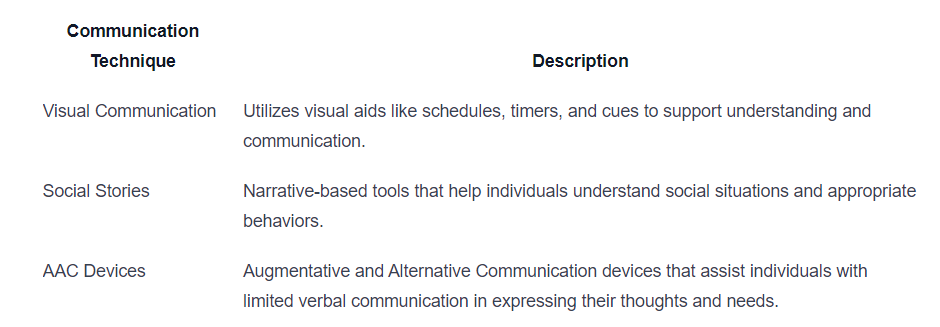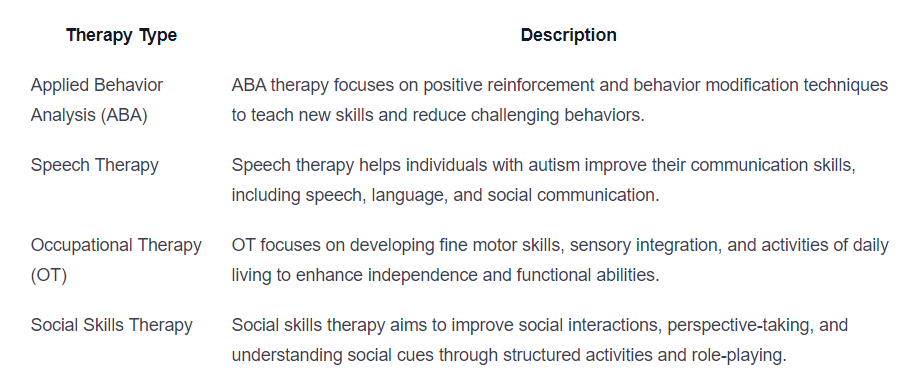Autism Behavior Management | Parenting Tips and Information
Unlock effective autism behavior management with expert parenting tips and essential information for a brighter future.

Understanding Autism Behavior Management
When it comes to managing behaviors associated with autism, it is important to have a thorough understanding of what autism is and why behavior management is crucial in supporting individuals on the autism spectrum.

What is Autism?
Autism, also known as Autism Spectrum Disorder (ASD), is a neurodevelopmental disorder that affects individuals in various ways. It is characterized by challenges in social interaction, communication difficulties, and repetitive behaviors or restricted interests. Autism is a spectrum disorder, meaning that it manifests differently in each individual, with a wide range of strengths and challenges.
Autism can present itself in early childhood, and the signs and symptoms may become apparent by the age of two or three. Some common indicators of autism include:
- Delayed or limited speech development
- Difficulty with social interactions and understanding social cues
- Repetitive behaviors or rituals
- Sensory sensitivities or aversions
- Fixation on specific topics or objects
It is important to note that each individual with autism is unique, and their experiences and behaviors may vary significantly.
Importance of Behavior Management in Autism
Behavior management plays a vital role in supporting individuals with autism to navigate their daily lives more effectively. It focuses on understanding and modifying behaviors that may impede their social interactions, communication, and overall well-being.
By implementing effective behavior management strategies, the aim is to promote positive behaviors, teach new skills, and reduce challenging behaviors. It is important to approach behavior management with empathy, understanding, and a person-centered approach, taking into consideration the individual's strengths, interests, and needs.
Behavior management in autism involves a combination of strategies and techniques that may include:
- Positive reinforcement: Reinforcing desired behaviors to encourage their repetition.
- Visual supports: Using visual aids such as schedules, charts, and social stories to enhance understanding and predictability.
- Structured routine: Establishing a predictable routine to provide a sense of security and reduce anxiety.
These strategies are tailored to the unique needs of individuals with autism and are often implemented in collaboration with parents, caregivers, educators, and other professionals.
By understanding what autism is and recognizing the importance of behavior management, individuals with autism can receive the necessary support and interventions to thrive in their daily lives. With a person-centered approach and effective strategies, it is possible to promote positive behaviors, enhance communication skills, and improve overall quality of life for individuals on the autism spectrum.
Strategies for Autism Behavior Management
When it comes to managing behaviors associated with autism, there are several effective strategies that parents and caregivers can employ. These strategies focus on creating a supportive and structured environment that promotes positive behavior. In this section, we will explore three key strategies for autism behavior management: positive reinforcement, visual supports, and a structured routine.
Positive Reinforcement
Positive reinforcement is a widely recognized and effective strategy for managing behaviors in individuals with autism. It involves providing rewards or praise for desired behaviors, which helps to motivate and encourage the repetition of those behaviors.
The key to successful positive reinforcement is identifying the specific behaviors you want to encourage and choosing appropriate rewards that are meaningful to the individual. Rewards can vary depending on the person's preferences and interests, such as verbal praise, stickers, tokens, or small treats.
It's essential to be consistent and immediate with the reinforcement, as this strengthens the association between the behavior and the reward. Over time, positive reinforcement can help shape positive behaviors and reduce challenging behaviors.
Visual Supports
Visual supports are powerful tools for individuals with autism, as they provide visual cues and aids to enhance communication and understanding. These supports can take various forms, such as visual schedules, social stories, and visual cues.
Visual schedules help individuals understand and anticipate their daily routines by presenting information in a visual format. They can be displayed using pictures, symbols, or written words to guide the individual through their activities and transitions.
Social stories are personalized narratives that provide individuals with autism with information about specific social situations or behaviors. They help individuals understand expectations, recognize emotions, and learn appropriate responses in different social contexts.
Visual cues, like visual timers or cue cards, can be used to prompt and reinforce desired behaviors. These visual supports provide a clear and consistent way to communicate expectations and facilitate understanding.
Structured Routine
A structured routine plays a vital role in managing behaviors for individuals with autism. Establishing a predictable and consistent daily routine helps reduce anxiety, increase feelings of security, and promote positive behavior.
A structured routine provides a clear outline of the day's activities, including mealtimes, schoolwork, playtime, and bedtime. It's important to create a visual representation of the routine using a daily schedule or visual timetable, which helps the individual understand and follow the sequence of events.
Consistency is key when implementing a structured routine. Stick to the established schedule as much as possible, but also be flexible and allow for minor adjustments when necessary. Transitions between activities should be smooth and accompanied by clear cues or visual supports to help the individual transition successfully.
By incorporating positive reinforcement, visual supports, and a structured routine into daily life, parents and caregivers can effectively manage behaviors associated with autism. It's important to tailor these strategies to the individual's needs and preferences, and to approach behavior management with patience, understanding, and consistency.
Communication Techniques
Effective communication is crucial for individuals with autism spectrum disorder (ASD) to express their needs, understand others, and navigate social interactions. In autism behavior management, there are various techniques that can support communication development. This section will explore three important communication techniques: visual communication, social stories, and Augmentative and Alternative Communication (AAC) devices.
Visual Communication
Visual communication involves the use of visual aids to support understanding and communication. It can be particularly beneficial for individuals with autism, as they often have a strong visual learning style. Visual communication can include the use of:
- Visual schedules: These schedules use pictures or symbols to represent daily activities or routines, providing visual cues and promoting predictability.
- Visual timers: Timers with visual indicators help individuals with autism understand the passage of time and manage transitions more effectively.
- Visual cues: Visual cues, such as gestures, pictures, or signs, can be used to help individuals understand and follow instructions or express their needs.
Using visual communication techniques can enhance comprehension, reduce anxiety, and promote independence and effective communication.
Social Stories
Social stories are narrative-based tools that help individuals with autism understand social situations and appropriate behaviors. They provide a structured description of a specific social scenario, using simple language and visual supports. Social stories can be customized to address individual needs and can cover a wide range of topics, such as greetings, sharing, or handling emotions.
The purpose of social stories is to provide individuals with autism a clear understanding of expectations, social norms, and appropriate responses in different situations. By using social stories, parents and caregivers can help individuals with autism navigate social interactions more confidently and reduce anxiety.
AAC Devices
Augmentative and Alternative Communication (AAC) devices are tools that assist individuals with limited verbal communication in expressing their thoughts, needs, and desires. AAC devices can range from low-tech options, such as picture boards or communication books, to high-tech devices with voice output.
These devices provide individuals with autism a means of communication when spoken language is challenging. AAC devices can be programmed with symbols, pictures, or words, allowing individuals to select and convey their messages. They can significantly enhance communication skills and improve social interactions.

By incorporating these communication techniques into autism behavior management strategies, parents and caregivers can create a supportive environment that promotes effective communication, social interaction, and overall well-being for individuals with autism.
Sensory Considerations
When it comes to managing behavior in individuals with autism, sensory considerations play a crucial role. Sensory issues are common in autism, and creating a sensory-friendly environment, implementing a sensory diet, and providing sensory breaks can greatly support individuals with autism in managing their behavior.
Sensory-Friendly Environment
Creating a sensory-friendly environment is essential for individuals with autism. This involves minimizing sensory overload and providing a calm and comfortable space. Here are some strategies to consider:
- Lighting: Use soft, diffused lighting to reduce harsh glare. Dimmer switches and blackout curtains can help control the intensity of light.
- Noise: Minimize unnecessary noise by using noise-cancelling headphones, providing quiet spaces, or using white noise machines to create a soothing ambiance.
- Visual Clutter: Reduce visual distractions by organizing and decluttering the environment. Use visual schedules and labels to provide structure and predictability.
- Texture and Touch: Consider the textures of furniture, fabrics, and surfaces. Some individuals may benefit from using sensory-friendly materials or having access to tactile objects.
Sensory Diet
A sensory diet is a personalized plan that provides individuals with autism with the sensory input they need to stay regulated throughout the day. It involves incorporating sensory activities and experiences into their daily routine. Here are some examples:

A sensory diet should be developed with the guidance of an occupational therapist who can assess the individual's sensory needs and provide appropriate recommendations.
Sensory Breaks
Sensory breaks are short periods of time where individuals with autism can engage in activities that help regulate their sensory system. These breaks allow them to recharge and prevent sensory overload. Here are some ideas for sensory breaks:
- Movement Breaks: Engage in activities such as jumping on a trampoline, going for a walk, or doing yoga to provide proprioceptive and vestibular input.
- Calming Breaks: Create a quiet space with cozy blankets and soft lighting for individuals to relax and unwind. Provide fidget toys or stress balls for tactile stimulation.
- Sensory Play Breaks: Set up a sensory play area with materials like sand, water, or playdough. This can provide a calming and engaging sensory experience.
Sensory breaks should be individualized based on the person's preferences and sensory needs. It's important to provide a variety of options and allow individuals to choose the activities that work best for them.
By considering sensory needs and implementing strategies like creating a sensory-friendly environment, incorporating a sensory diet, and providing sensory breaks, parents and caregivers can effectively support individuals with autism in managing their behavior and promoting overall well-being.
Parenting Tips for Autism Behavior Management
When it comes to managing behavior in children with autism, parents play a crucial role in creating a supportive and nurturing environment. Here are some essential parenting tips that can help in the effective management of autism behaviors.
Patience and Understanding
One of the most important qualities parents can cultivate is patience. Children with autism may exhibit challenging behaviors, and it's crucial for parents to approach these situations with understanding and empathy. By remaining patient, parents can create a safe space for their child to express themselves and learn appropriate ways to manage their behavior.
Understanding the unique needs and strengths of your child is also vital. Each child with autism is different, and what works for one may not work for another. By observing and listening to your child, you can better understand their triggers and develop strategies to address their specific behaviors.
Consistency in Approach
Consistency in parenting approaches is key to effective behavior management for children with autism. Establishing clear expectations and routines can provide a sense of stability and predictability for your child. Consistent rules and consequences help them understand boundaries and make appropriate choices.
It's important to communicate and collaborate with other caregivers, such as teachers or therapists, to ensure consistency across different environments. Sharing information and strategies can help provide a cohesive approach to managing behaviors and support your child's progress.
Self-Care for Parents
Parenting a child with autism can be demanding, both physically and emotionally. It's crucial for parents to prioritize self-care to maintain their own well-being. Taking time for yourself, engaging in activities you enjoy, and seeking support from friends, family, or support groups can help reduce stress and prevent burnout.
Here are some self-care practices that parents can incorporate into their routine:
- Physical exercise: Engaging in regular physical activity can help reduce stress and improve overall well-being.
- Mindfulness and relaxation techniques: Practicing mindfulness, deep breathing exercises, or meditation can help parents manage stress and promote emotional well-being.
- Seeking support: Connecting with other parents who have children with autism can provide a valuable support network. Support groups, online forums, or local community organizations can be great resources for finding support and sharing experiences.
By taking care of yourself, you'll be better equipped to handle the challenges that come with managing autism behaviors and provide the best support for your child.
Parenting a child with autism requires patience, consistency, and self-care. By practicing these parenting tips, you can create a nurturing environment that promotes positive behavior management and supports your child's overall development. Remember, every child is unique, so it's important to find strategies that work best for your child and adapt them as needed.
Seeking Professional Support
When it comes to managing autism behavior, seeking professional support can be invaluable for both the child with autism and their family. Professionals who specialize in autism can provide guidance, strategies, and resources to help navigate the unique challenges that may arise. In this section, we will explore three key avenues for professional support: therapy options, support groups, and working with educators.
Therapy Options
Therapy plays a crucial role in autism behavior management, aiming to enhance communication skills, social interactions, and overall well-being. Here are some common therapy options:

Each therapy option has its own unique approach and goals. It's important to consult with professionals to determine which therapies are most suitable for your child's specific needs and preferences.
Support Groups
Joining a support group can provide parents and caregivers of children with autism a valuable network of understanding and shared experiences. Support groups offer a safe space to seek advice, share challenges, and learn from others who are going through similar journeys. These groups can be in-person or online, allowing for flexibility and accessibility.
Support groups often include:
- Other parents or caregivers of children with autism
- Autism advocates and experts
- Mental health professionals
By connecting with others who understand the unique aspects of autism behavior management, parents and caregivers can gain emotional support, practical tips, and a sense of community.
Working with Educators
Collaboration between parents and educators is essential for effective autism behavior management within educational settings. Educators play a vital role in creating an inclusive and supportive learning environment. Here are some strategies for working with educators:
- Share information: Provide educators with relevant information about your child's specific needs, strengths, and challenges. This can help them tailor their teaching strategies and accommodations accordingly.
- Individualized Education Program (IEP): Collaborate with the school to develop an IEP that outlines specific goals, accommodations, and support services for your child.
- Regular communication: Maintain open lines of communication with teachers and school staff to stay informed about your child's progress and address any concerns that may arise.
- Training and professional development: Encourage educators to participate in autism-specific training and professional development opportunities to enhance their understanding and skills in supporting students with autism.
By fostering a strong partnership with educators, parents can ensure that their child's educational experience is tailored to their unique needs and promotes positive behavior management.
Seeking professional support is a vital component of effective autism behavior management. Therapy options, support groups, and collaboration with educators can provide invaluable resources and guidance for parents and caregivers, ultimately helping to navigate the challenges and optimize the well-being of individuals with autism.
Sources
https://raisingchildren.net.au/autism/behaviour/understanding-behaviour/challenging-behaviour-asd
https://www.ncbi.nlm.nih.gov/pmc/articles/PMC9324526/
Similar articles
We’re here to help you

Our team is here to assist you in this process. Contact us for any assistance.
it’s easy to apply
We Accept Most Insurances
Our in-network insurance partnerships make ABA therapy more accessible to families throughout our service areas.







Our Insurance Process
We'll request your insurance details to help us verify your plan's coverage for ABA therapy. Once we've received this information, we'll walk you through your benefits, including copayments, deductibles and out-of-pocket maximums, so you know what to expect in advance.
Our team will then handle the preauthorization and all the necessary paperwork.
.svg)





















.jpeg)


































.jpeg)




.jpeg)







.jpeg)











.jpeg)
















